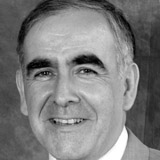 My most formative experience in gerontology was a student gap year in Marseille. A volunteer with Les Petits Frères des Pauvres, a charmingly radical organisation dedicated to improving life for older people, I was fascinated by their motto—les fleurs avant le pain. At first sight, the focus on flowers ahead of bread seemed twee.
My most formative experience in gerontology was a student gap year in Marseille. A volunteer with Les Petits Frères des Pauvres, a charmingly radical organisation dedicated to improving life for older people, I was fascinated by their motto—les fleurs avant le pain. At first sight, the focus on flowers ahead of bread seemed twee.
The realisation that the state tends to provide the basics, and that what many older people lack is a sense of celebration, fun, and style was an eye opener. In addition to providing some heavy duty home care with volunteers, there was a major focus on outings (including a memorable Coppélia with Zizi Jeanmaire), birthdays, and holidays, with the agenda generally set by the older people.
Such positivity towards older people and their vitality in the face of often devastating disability lit a torch to my imagination. The attention to a world view that included style, beauty, and fun provided a link between the warmth and positivity towards older people in my own family, and that of the broader constituency of older people, which has sustained and encouraged me during my career as a geriatrician.
I was delighted to experience an unexpected and magnified revival of these insights and energy earlier this month at a remarkable conference on cultural gerontology in Galway, organised by the European Network on Ageing Studies.
In many ways analogous to the relationship between the medical humanities and medicine, cultural gerontology examines the personal and societal narratives of ageing largely through the arts, humanities, and social sciences.
As outlined by leaders in the field, while ‘culture’ is open to broad and conflicting usage, it can be described as a tendency, or a field, with a central focus on meaning, a desire to transcend old paradigms, and to bring a fuller, richer account of later years than heretofore presented in gerontology.
By deploying diverse methodologies—visual, literary, spatial, tactile—cultural gerontology has brought new aspects of later life into view, exploring topics such as consumption, embodiment, identity, time and space. The engagement of older people with research and researchers was a welcome and recurrent theme.
And what a range of narratives! Spoilt for choice among a palette that included ageing among Native Americans, poetry, music, film, fashion, history, walking sticks, and theatre—to name but a few— it was hard to settle on which of the eight parallel sessions to join.
As a flavour of what was on offer, I was a discussant on a session on research and performance, teasing out the impacts of a theatre performance by older people based on the research with which they were participating. This bold idea was entertaining and stimulating, and generated much discussion about how such engagement drew on and dissolved boundaries between scholarship, public engagement, advocacy, ownership by older people of research about them, and elements of action research.
As chair of a symposium on literature on ageing, I was struck by the relevance of Irish literature in a global context, with perceptive presentations on ageing through the works of Samuel Beckett, John Banville (via Barthes, Benjamin, and Levinas), and Jennifer Johnston from the UK, Madrid, and Sweden respectively.
In the session where our own team presented on aesthetic deprivation and ageing in clinical settings, there was a wonderful presentation on what older people thought of key social gerontology concepts such as resilience—not a lot, as it turned out!
An entertaining insight from the floor mentioned the experience of asking an older woman about the (now outdated) concept of ‘successful ageing’; after a day’s delay, she reverted: “It’s an oxymoron!”
Flair and style were notable in the sharp and witty presentations of Hannah Zeilig, the gerontologist in the London School of Fashion, who also gave an insightful talk on using art to train dementia carers.
Beauty was also centre stage in an exquisite and challenging video reflection on ageing, sexuality, and beauty by Sukey Parnell and Naomi Woodspring.
Just as in the medical humanities, teasing out the points of interaction between the various styles and forms of scholarship is a welcome challenge. For any one work of culture, gerontologists might draw quite different interpretations, as exemplified in differing views on The Hundred Year Old Man who Climbed Out of the Window and Disappeared from Ireland and the USA.
Sometimes, the sheer art and earnestness of the presentation and work from a discipline novel were sufficient to me to allay academic concerns, and opened unexpected vistas on to topics such as poetry and dementia, neuroculture, dress and shopping.
We are accustomed to the metaphor of the ugly duckling for the transition from adolescence to adulthood. Continuing the avian theme, I left this conference reflecting that the avian fable for later life is surely that of the phoenix—singed, a little the worse for wear, but still magnificent—from the ashes of midlife.
Given that ageing is now the predominant subtext of all adult medical specialities, I would recommend this conference equally to clinicians and those engaged with the medical humanities.
If the wait for the next Cultural Gerontology Conference (2017 in Graz) seems too long, the 2015 congress of the European Region of the International Association of Gerontology and Geriatrics in Dublin will have a strong representation from this vital, sparky, and invigorating aspect of research into ageing.
Desmond O’Neill is a consultant physician in geriatric and stroke medicine and immediate past president of the European Union Geriatric Medicine Society.
